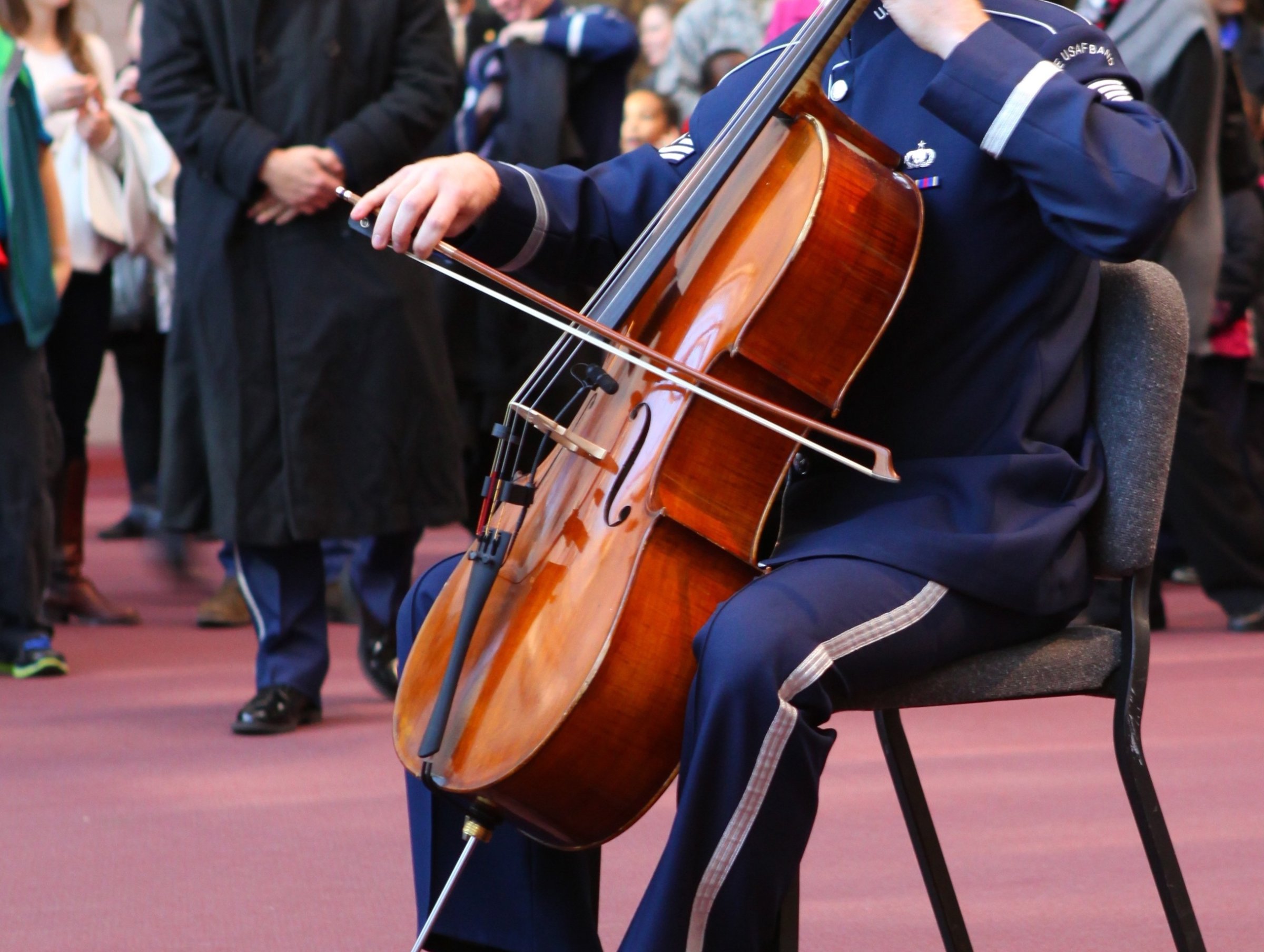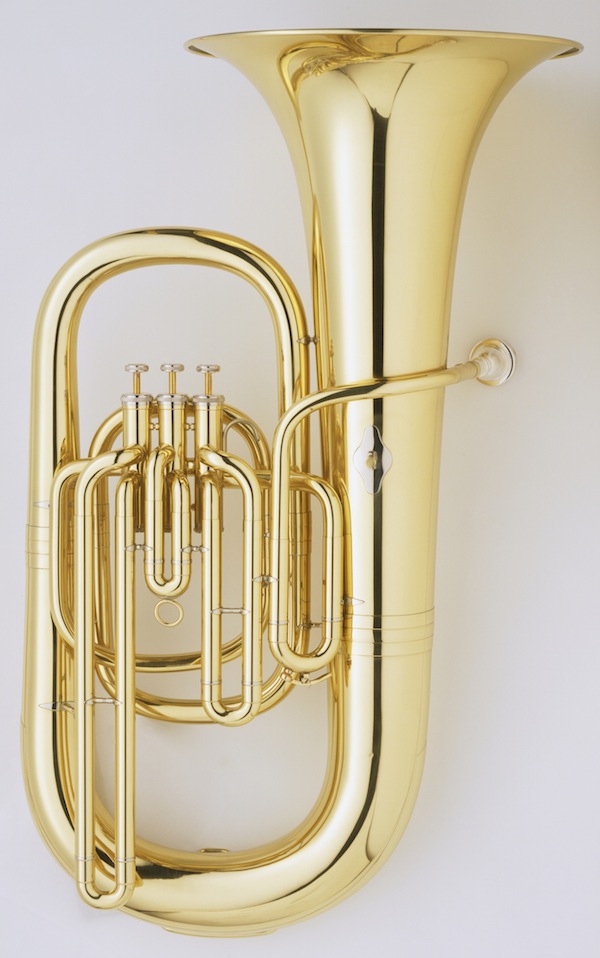
U.S. military bands will be out in force this July 4 holiday weekend. Their blaring trumpets, booming drums and trilling piccolos will get many American hearts a-pounding and toes a-tapping. No one would expect to see a rare $75,000 18th Century Italian cello among the brass and drums. But that’s just what the Air Force Band wants to do.
Sure, the Air Force loves to fly its so-called 5th-generation fighters like the F-22 and F-35. In fact, it’s already eyeing 6th-generation aircraft for 20 years down the runway. But sometimes—even for the most technologically-advanced service—older just seems to be better. That explains why it wants a 1787 cello—160 years older than the service itself.
The Air Force Band’s planned purchase offers American taxpayers an insight into how the military decides what it needs, and how it goes about fulfilling that need. It illuminates complicated Pentagon procurement terms like “requirement” and “sole source” and “competitive reverse auction,” without all the engineering gibberish associated with buying a jet fighter. The band describes itself as the service’s “premiere musical squadron,” and includes five cellists among its various ensembles. It is based at Andrews Air Force Base outside Washington, D.C.
The Defense Department posted a solicitation for a cello on Tuesday, saying it would be conducting an “online competitive reverse auction” to ensure taxpayers get the best price. Unlike a conventional auction, where bidders keep increasing how much they’re willing to spend, a reverse auction involves sellers setting ever-lower prices to win the deal.
But while that works fine for boots and bullets—made by multiple companies seeking government contracts—it doesn’t work so well when the military demands one specific item owned by one specific entity. “Brand Name Only (Exact Match),” the announcement says. “There are no substitutes available.”
To buy something from a single source—without competition—the would-be purchaser has to specify what is being bought, its “estimated cost,” and when it will be delivered. The unnamed Air Force official who completed the documentation for the cello’s purchase specifies that it must be a cello “crafted by Joannes Gagliano 1787” (on Thursday, the Air Force changed “crafted” to “labelled,” and moved the bid-closing date from July 12 to July 7). The service wants it 45 days after the contract award (the seller is a Maryland dealer). But no estimated cost is provided. Captain Derek White, an Air Force spokesman, said procurement rules cap this particular purchase at $150,000. The final price, he added Thursday, will likely be around $75,000.
Joannes (also known as Giovanni) Gagliano of Naples belonged to one of Italy’s most famous stringed-instrument-making families. While priced well below multi-million-dollar Stradivarius fiddles, Gagliano’s are still prized and sold by fine auction houses and musical-instrument shops around the globe. A survey of five of his instruments (four violins and a viola) shows they have sold for an average of nearly $95,000 in recent years (a major musical-instrument retailer sells 32 kinds of new cellos, topping out at $6,600).
So why buy such a costly instrument? That’s where the military’s sacrosanct “requirements” come into play. Normally, when military requirements are cited, you might think of how fast a fighter needs to fly, or how thick a tank’s armor has to be—you know, things needed to win in war. Well, that same logic can seep into rear-echelon military goods, as these Air Force claims for the antique cello attest:
This cello is a fine example of professional quality instrument that meets the demands of The U.S. Air Force Band…Each note starts quickly and clearly without any initial noise at all (not even an icy harshness) with almost an initial pop. After playing over 50 similar instruments, this is the only one that meets the rigorous demands required by the U.S.A.F. Band…
The 1787 Joannes Gagliano Cello brand name embodies a superior family of hand-crafted workmanship representing a spectrum of ideal functionality and flexibility…these exceedingly high standards are uniquely in accordance with the performance mission of The USAF Band and render any other instrument options unsatisfactory…
This world-class instrument is an ideal choice for members of The USAF Band and the demanding standards required for our daily mission preparation and execution. After consulting countless other recognized industry standard models and relying on multiple perspectives from numerous professionals, it has been determined that only this can meet the exacting standards and professional requirements of The USAF Band.
Terms like “rigorous demands,” “a spectrum of ideal functionality and flexibility” and “our daily mission preparation and execution” are the kind of lingo defense contractors cram into their sales brochures—and the language the Pentagon uses when it describes what it wants in whatever new weapon it wants (although they tend to be more objective, citing characteristics that can be physically measured).

The Air Force isn’t the only service that reaches for the top shelf when it comes to outfitting its troops…who play in its bands. The Army, for example, bought a tuba handmade in Germany for $26,479.24 earlier this month.
Military bands have been a target of budget cutters for years. The latest threat is contained in the House version of the Pentagon’s 2017 defense authorization bill, which the Senate has yet to act on. “The services may be able to conserve end strength by reducing the number of military bands,” the House bill reads. There’s also language that would limit military bands to official functions. Rep. Martha McSally, a retired Air Force colonel, led the effort to trim the military’s music battalions. “We’ve got hundreds of people playing the tuba and clarinet, wearing the uniform, as opposed to core military capabilities,” the Arizona Republican—and former A-10 Warthog pilot—noted at a March hearing.
The Pentagon spends about $437 million annually on 137 bands and their 4,350 buglers, fifers, strummers and drummers. That’s only 0.09% of the military’s annual budget. “Strategically employed, the bands provide senior leaders a way to leverage the power of music to facilitate the accomplishment of national objectives at home, overseas, and in an expeditionary environment,” Pentagon spokesman Mark Wright says. “Each year, military bands provide tens of thousands of free performances to communities across the nation”—like this Air Force Band performance at the Smithsonian’s National Air and Space Museum (which begins with a solo cello) and has been seen more than 16 million times on YouTube:
Anyone who has ever been stirred by a military band knows it can boost morale. “We put a face on the Army that other occupations in the military really can’t do,” Army Sergeant Grant Boyd, a bassoonist in the Army Training and Doctrine Command band at Fort Eustis, Va., told the Daily Press of Newport News earlier this month. “It builds bridges between us and the community.”
Those who love military bands are fighting the latest proposed restrictions. One booster has posted a petition on the White House website urging President Obama to keep the music playing at the same volume (it’s about 25% of the way to the 100,000 signatures needed by July 19 to get a White House reaction). “This would limit band performances so that they could not participate in: patriotic parades or concerts (including July 4th), official receptions and banquets, concerts for troops in war zones, state funerals, even the national anthem at almost any event,” the anonymous (and over-reaching) petitioner claims. “If these events were contracted to civilian musicians the cost would be significantly higher.”
Especially if any of them were playing 18th Century Italian cellos.
More Must-Reads From TIME
- The 100 Most Influential People of 2024
- Coco Gauff Is Playing for Herself Now
- Scenes From Pro-Palestinian Encampments Across U.S. Universities
- 6 Compliments That Land Every Time
- If You're Dating Right Now , You're Brave: Column
- The AI That Could Heal a Divided Internet
- Fallout Is a Brilliant Model for the Future of Video Game Adaptations
- Want Weekly Recs on What to Watch, Read, and More? Sign Up for Worth Your Time
Contact us at letters@time.com